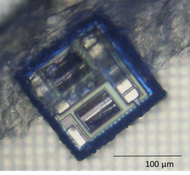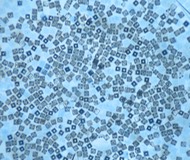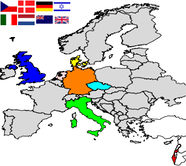Currently we (UOG) are exploring a series of redox-active polyoxometalates (POMs) yielding a regular distribution of charge-storage centres. We have investigated the Well-Dawson POM class which may contribute with extending electronic features if integrated in lablets. The chief attraction of Well-Dawson POMs is their stability, substantially higher redox potentials and interesting 2D self-assembly compared with their organic counterparts (e.g. ferrocene, porphyrine). Theoretical studies in line with experiments have been conducted leading to fascinating results with useful applications for miniaturised electronic devices coming.
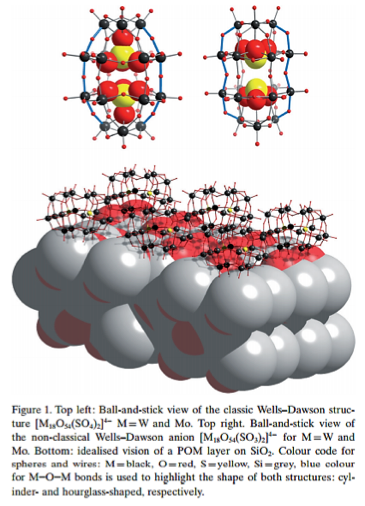
In year two RUBa produced a full range of lablet-sized (100x100µm) interdigital metal structures for supercapacitors, compatible with the main CMOS process (in a top metal probe card) using Europractice/TMSC foundry at full wafer scale. A score of these test structures was configured combinatorially, all electrically interconnected to allow galvanic post-processing, and post-fabrication separation. Protecting layers from the fabrication were removed by plasma-etching and 1/4-wafers tested for electroless deposition of Ni and Au and galvanic deposition of MnO2 for supercapacitor performance. Macroscopic supercap performance from year one scaled to within a factor of 2-3 for the performance on the smaller areas (UOG).
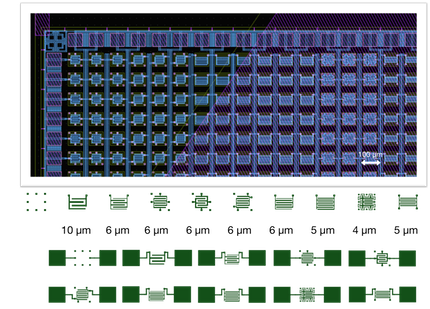
Figure 2 : Lablet sized supercapacitor test structures on small portion of an 8” probe card wafer. Some of the test structures employed are extracted in the green diagrams below. The test structures are interconnected on the wafer to allow parallel galvanic coating with e.g. MnO2. Pictures and design: RUBa.
In addition, procedures were developed by RUB for Zn-MnO2 battery deposition to directly power lablets in mild concentration (100mM) solutions.

